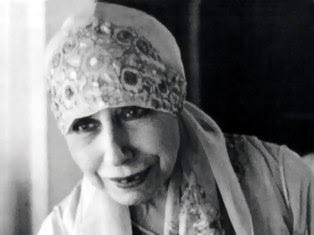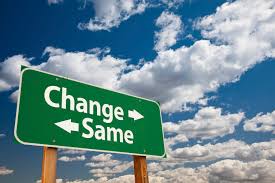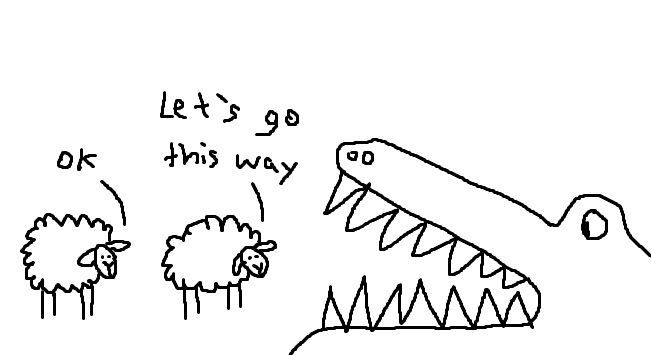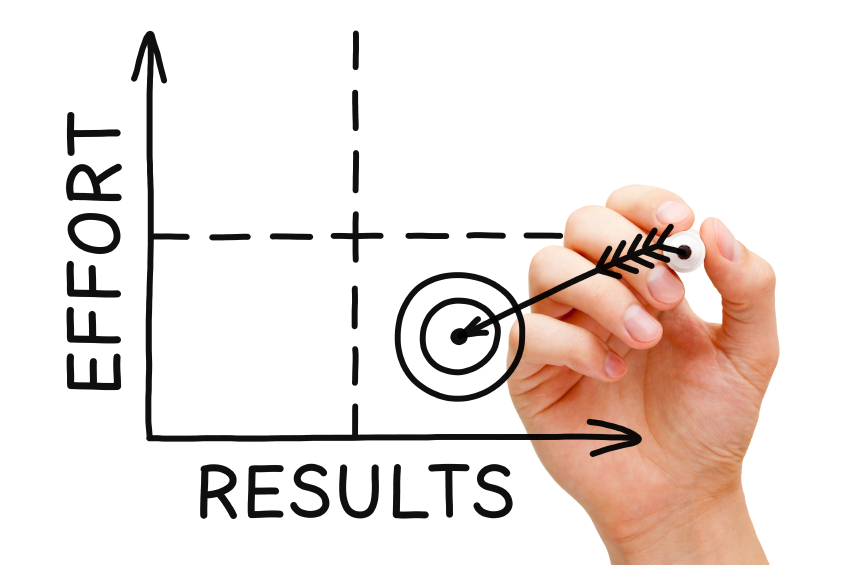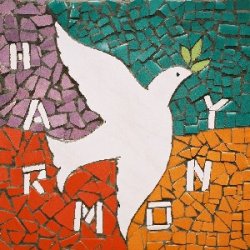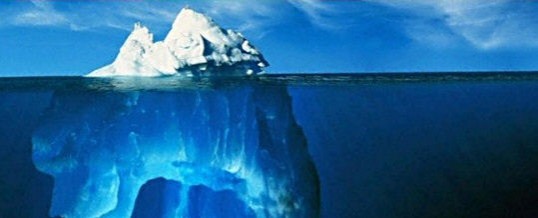Growth
Conscious individuality
Abstract
Becoming a conscious individual entails dismantling every one of our false constructions and opening to the Truth inside to govern our entire being. It is about being an authentic human being and embarking on this process is essential to our growth, health and well-being. The author shares his experiences.
Introduction
Becoming a true individual can be a real grind and can be done only consciously. For good reason, the Mother calls it a “conquest” where the “will to change” is mandatory (1). It is the first stage of yoga, because “once you have realised within you something like a personal independent and conscious being, then what you have to do is to break the form and go farther (2).” It is the first requirement of human growth; it is about becoming an authentic human being.
Sri Aurobindo refers to “two periods of this Yoga, — one of the process of surrender, the other of its crown and consequence. In the first the individual prepares himself for the reception of the Divine into his members. For all this first period he has to work by means of the instruments of the lower Nature, but aided more and more from above (3).” This period seems to involve and conclude with the formation of a conscious and true individual which is the subject of this article.
Creating this complete integer can be at least a lifetime’s work but embarking on it is essential to our health and well-being. It is not just a matter of simple psychology as every element of the human condition is interlinked in the complex matrix of our human nature. It has a holistic effect. Once the true identity is formed, it has ripened to the ultimate stage, the surrender of what one is to the Highest Power. There can be no surrender more significant than this: what is being offered is a vast state of freedom and self-mastery. The identity with the boundless reveals the divine secret behind our human potential.
The status quo
The trouble is, very few people have an idea of who or what they really are. The true treasure is concealed. The usual human being is analogous to a caged animal, tethered to the past and a creature of habit. Even when it feels most free, it travels unconsciously down familiar grooves and follows only repeated patterns. It remains imprisoned inside its own veneer. Its body and even its emotional responses are both controlled largely by habit. It remains enslaved by the routines and motions of ordinary life and over the years it becomes a reflection of it. Even before birth, a preparatory phase is already under way and afterwards it is reinforced by a vast range of societal and environmental conditioning, “that slow formation through hours and hours, through days and days, experiences added to experiences, which gradually builds up a consciousness. You are underneath it as beneath a bell-glass (4).” During adulthood, the human becomes more complicit in building his own dungeon. A pressure for conformity solidifies and he edges towards death in at best, a state of semi-conscious drowse. He grasps any handfuls of happiness that are offered along the way but overall he can access only a pallid sense of well-being. Inside and out he is fenced in by barriers that limit his capacity to expand and breathe.
False identification
The reason for this is false identification. It is not easy to correct. Although the nature is almost entirely borrowed, it proves always so difficult to relinquish. The human being is immersed in what are only mere instruments: mind, life and body. He loses his true identity. Not least, this situation reduces the effectiveness of the instruments themselves. This state of affairs can become very inimical to his health. It is only the Truth which gives them a purpose. The innate divinity gets shielded from our gaze and a thick ‘crust’proceeds to cover our true nature (5). In some, it seems so thick that it completely chokes everything underneath. For instance, we identify ourselves and others by the body and the personality. Individuality should not be confused with personality. Personality is a superficial front and, with the body, comprises a substantial part of what society defines us by. This false identification applies to every side of our nature. A true individual, however, centres his or her entire being on the Truth. It is not something that can be put into words. It is not really a list of attributes and qualities. One just ‘is’ and automatically knows when any action or thought is out of resonance. It is a spontaneous condition. It is the connection inside which facilitates this: there is something indeed very true within and it is only this consciousness that can steer back to our genuine source.
But humanity is conditioned into a herd mentality and it takes strength and courage to break free of the pack. The pack evokes always an element of safety and compromise. As long as one stays within the tramlines, one gets the accustomed benefits of the ordinary life. One can all too easily become a part of the walking dead and unless one makes a strenuous effort to stay awake, it will cage and ensnare the soul. It is this false identification which must be shed first if one is to become an authentic human being. One movement can become the first step to breaking this barrier. The true individual is the Divine Inhabitant living within and if one can recognise this, even for a few seconds, the momentum will be entirely reversed. So the first stage in becoming a true individual is always one of self-giving:
“In the depths of your consciousness is the psychic being, the temple of the Divine within you. This is the centre round which should come about the unification of all these divergent parts, all these contradictory movements of your being. Once you have got the consciousness of the psychic being and its aspiration, these doubts and difficulties can be destroyed…. When the central being has made its surrender, the chief difficulty has disappeared. The outer being is like a crust. In ordinary people the crust is so hard and thick that they are not conscious of the Divine within them. If once, even for a moment only, the inner being has said, ‘I am here and I am yours’, then it is as though a bridge has been built and little by little the crust becomes thinner and thinner until the two parts are wholly joined and the inner and the outer become one (6).”
So a foundation is established. This may be the first significant realisation and springboard to a new life. The psychic being has a radiating influence. A whole new process starts to unwind and one moves to new synchronous realms by collaborating with it. We do this with consciousness because it requires consciousness to distinguish the true from the dross. I have found the work of erecting a true individuality take two forms. In a sense, one is preparatory to the other but both seem simultaneously to run side by side. The first task is to dismantle whatever conceals the truth of our being and the second is to open the gates to our divine potential.
Three factors
From my perspective there are three influences which stop man from drowning and assist his rise to true human-hood: personal effort, the descending force and the psychic being. Looking at the first, in the absence of any guiding light, there is considerable huffing and puffing while the lower nature tries to produce its share of the progress. Each element wants always its own piece of cake. They are always giving instructions and signals. In fact these messages conflict usually with one another and we are rarely able to move forward in a straight line. So which do we heed?
Many of these signals are erroneous but there is invariably a leading aspect to our nature that provides a glimpse of what our individuality is truly about. Identifying this will give us some kind of foundation on which to build. Initially this is where we pitch our camp and this is where considerable effort is concentrated and expended. It is not the securest of platforms and one open to considerable misinterpretation. Much effort is needed because there will be times when the psychic being is almost entirely obscured. One’s personal will is the only start: one prays for light in the darkness and is fumbling continually for one’s next move. The guidance appears spasmodically and for a long time this effort is our only recourse before any kind of inner connection is cemented.
In the midst of all this, at every juncture, there is the descending Force which is at work, shaping and moulding the personality into an individual. We need to give ourselves to this Force. If we remain open to it, it can go right down to the deepest cells of our body. Initially it works behind the scenes but as soon as we experience its workings vividly, its effect can be one of alchemy. For many of the traditional yogas, changing the nature is impossibility. So this process requires the supreme determinism. Here is an opening to the Grace, the ultimate sanction. It is a process that unwinds as soon as one gives oneself. In the Integral Yoga particularly, one gradually becomes more and more conscious of it. For me, it started as a vague sensation at the top of my head. It accompanies one for life and, when one is conscious of it its influence becomes ever more tangible and immediate. One can feel it eventually coursing through one’s veins. I feel that one must be awake to it to benefit from its fullest influence.
Progressive harmony
I have found that the work of individualisation is done also through the process of inner alignment. It is by a progressive harmony that a true individual is created. Individuality needs to be cemented and it is harmony which is the glue that holds it all together. Harmony is a principal attribute of the psychic being. Starting from a narrow and thin base, with attention, this harmony will expand and grow. As the harmony becomes more perfect, a true integer gradually evolves. It will take considerable time and patience. Our aim is creating a homogenous whole, but initially we will find inevitably many barriers inside. Our being is compartmentalised and we become aware of it being pulled in all kinds of different directions. This awareness is essential because these barriers can be dismantled by the practice of self-observation. Self-observation is an art which is enhanced only by continual practice.
The work separates the true from the dross in a quiet and undemonstrative way. By reading the signals from our body, we come to find the truth behind the enigmas of our scattered psychology. If we call for help in this task from the highest source, it is invariably given. The work responds always with the descending Force. When we are relaxed and connected, we simply scan the body from top to bottom. An inner torch might even come to hand. It depends upon the nature, but if undertaken with the fullest sincerity, the right means will come forward always to carry out the task. The process substitutes automatically the true by the false and leaves behind a sense of overriding peace. It demonstrates that knowledge possesses a great power, the power to truly change and transform. Its base is always the psychic force which is present but hidden inside every human being.
The psychic being is never satisfied with piecemeal solutions. It asks for integrality, which means that the harmony has to be established over both the entire inner and outer being. A true individual radiates the psychic influence over the whole being. This includes the body. Deep in its cells, the form yearns to reveal and express the spirit that is concealed behind it. The body is the crucible of this change:
“The limitations of the body are a mould; soul and mind have to pour themselves into them, break them and constantly re-mould them in wider limits till the formula of agreement is found between this finite and their own infinity (7).”
It is my deepest aspiration that the spirit can express itself in a total way throughout the body. This is why the crust must go. Anything ‘habitual’ is precisely this and needs to be transcended. When the form is invaded by the spirit it ceases to be mere ‘crust’ but an intrinsic part of the new individual. That is because it has become conscious. The body that we are given is our instrument for transformation. The very nature of the body determines the type of transformation that has to unfold. I find this such a truth to comprehend when I find it so often in the greatest difficulty! However, it is always the spirit which defines the body, and not the body itself, as is commonly understood, and one must be persevering and patient in allowing this true light to step forward. When the instrument becomes conscious, it identifies with its true master and user. The process of transformation demands us to make them one.
The subconscious
The Truth can sometimes have a shattering effect. In one blow, all past formations are demolished. It raises also that silt that accumulates at the bottom of our nature. These elements come down from regions which are very difficult to identify and interpret. However, the human being is driven to a very great extent by these subconscious impulses. Its body wriggles about in a snare of subconscious habits; its emotional reactions are but a reflex of this repetitive force. It cannot claim true individuality as long as it is controlled by this shadow.
If one is sincere in this work, this sediment must never be allowed to settle; it needs to be disturbed as frequently as possible. However this process can never be forced and it is not advisable to preconceive it. When one is ready, the force of the sādhanā will start to do its work. It is a process which, given time, naturally arises and if one remains attentive, one gets a sense of where and when the process is underway. It is a matter of opening integrally to higher realms of consciousness and light. Sooner or later, it is bound to percolate down to the lowest parts. It sometimes happens unnoticed but if one is awake the effect is much more conclusive.
Recently I had a feeling of thousands of tiny, obscure granules shaking and separating from deep down inside. The whole episode shook me to the core. At the time and immediately afterwards, it was like having a food mixer switched on at high velocity inside. I felt dreadful: low energy, agitated mind and with all these dark negative patterns swirling around inside, unable to find a place to settle and not knowing where to go.This sensation continued almost for an entire day but a beautiful clarity and refined energy awaited me when I awoke the following morning. It was a cleansing.
Creating an individual
I believe that as long as the self-giving is sincere and true, we have just to mind our nature. We have to keep our stable clean. That is our only look-out. The change will come automatically if one refers continually to the psychic truth inside. This is the true agent of change and the true individual that is present in all of us. At the point from where we first surrender to it, to constantly referring to it in all our inner movements and outer actions, our speech and our silence, when we rise and when we sleep, it gradually steps forward and becomes increasingly individualised. Our nature starts to merge more into it. The spirit behind the outer form starts to truly shine. One becomes more vast and free; there is a greater feeling of health, abundance and well-being. The process behind can take the form of detailed inner work. Indeed, I find it helps to unravel the knots hidden inside my nature. But it is not something we can afford to devote some of our time to. One must learn to live exclusively there: surely this is the only way to self-mastery and conscious individuality.
References
1. The Mother. Collected Works of the Mother, Volume 4. 2nd ed. Pondicherry: Sri Aurobindo Ashram Trust; 2003, p. 349.
2. The Mother. Collected Works, Volume 9. 2003, p. 47.
3. Sri Aurobindo. Birth Centenary Library, Volume 20. Pondicherry: Sri Aurobindo Ashram Trust; 1970, p. 79.
4. The Mother. Collected Works, Volume 8. 2003, p. 391.
5. The Mother. Collected Works, Volume 3. 2003, p. 7.
6. Ibid.
7. Sri Aurobindo. SABCL, Volume 16. 1971, p. 386.
James Anderson is a member of SAIIIHR and coordinating editor of NAMAH
Share with us (Comments,contributions,opinions)
When reproducing this feature, please credit NAMAH,and give the byline. Please send us cuttings.

